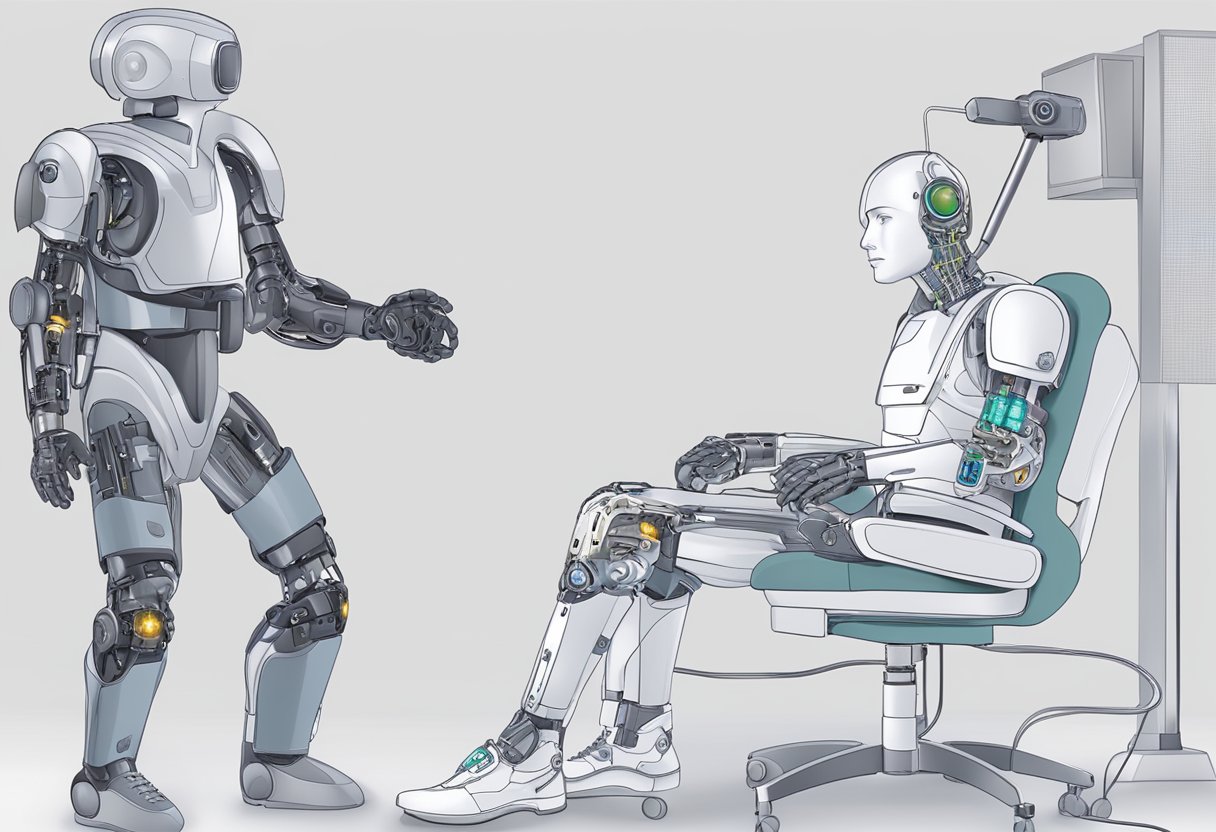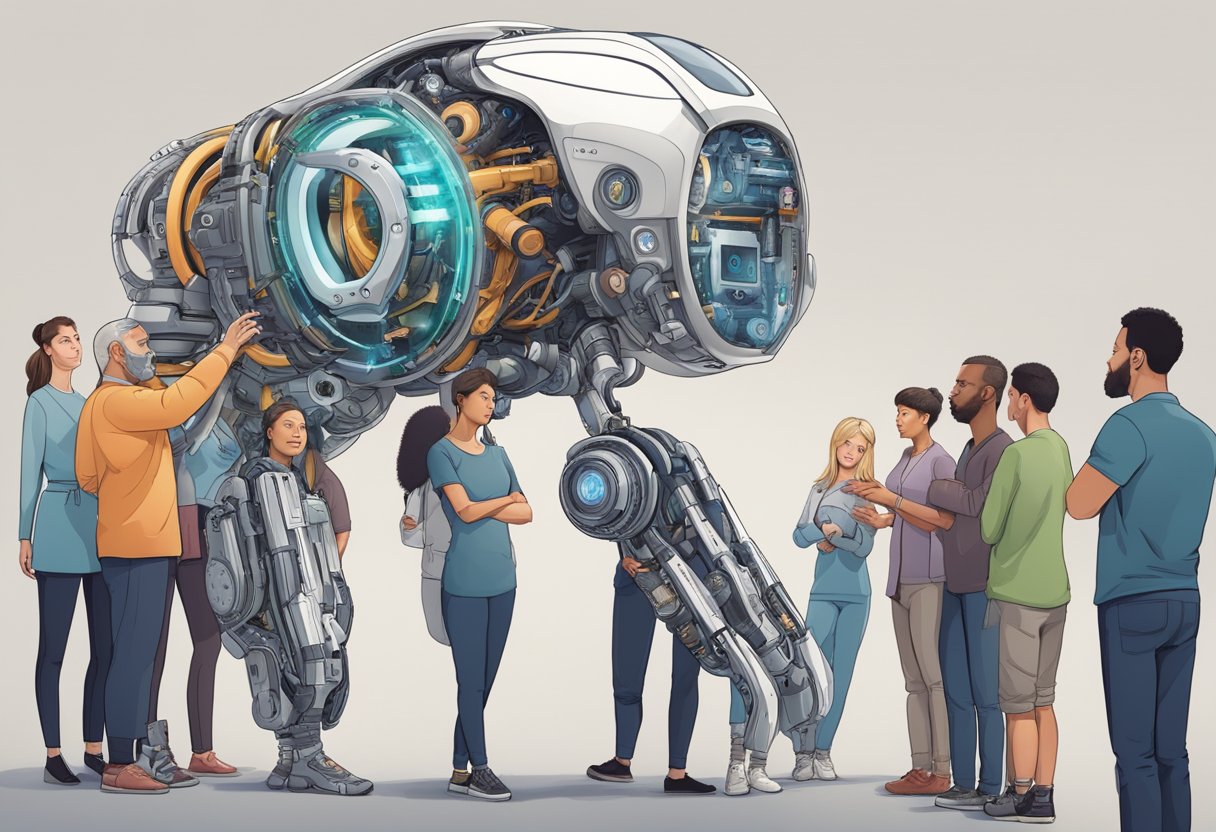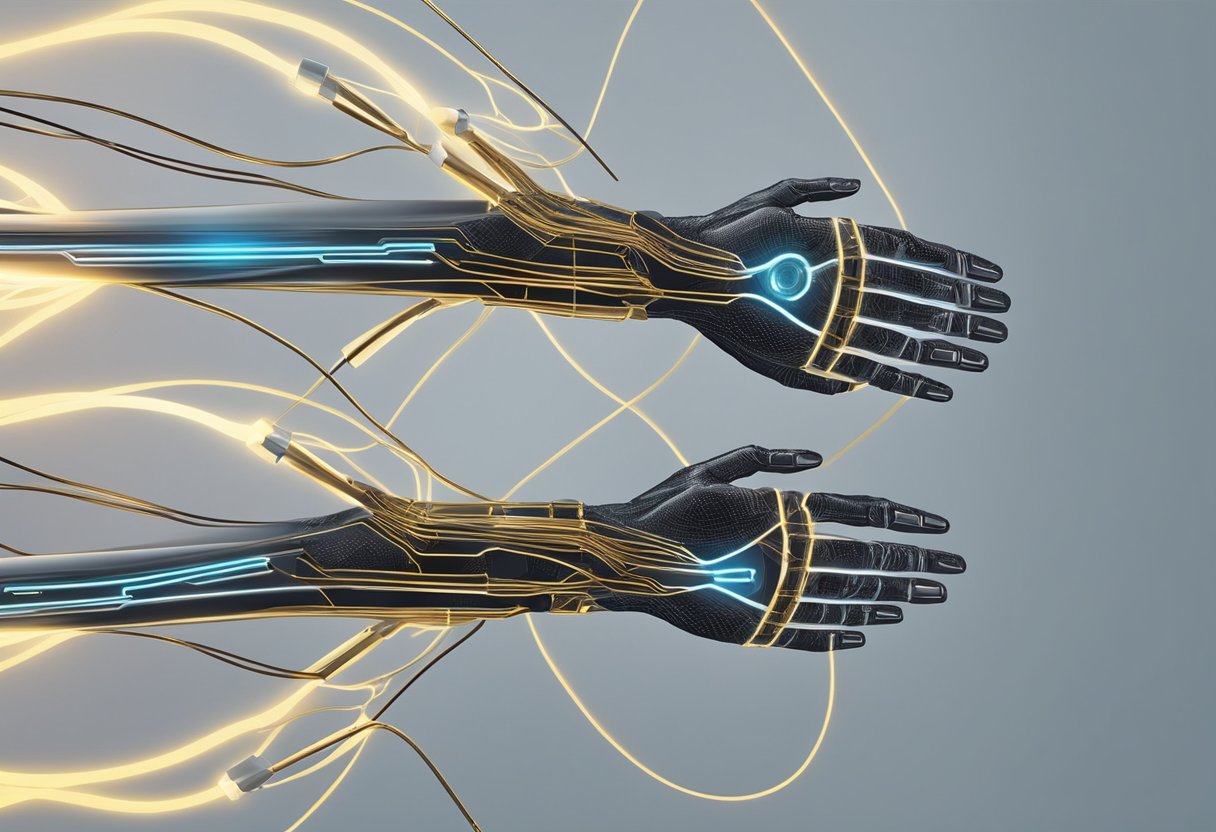Mind-controlled bionic limbs have been a topic of interest for many years, with researchers and engineers working to create prosthetic limbs that can be controlled by the mind.
These technological advances in prosthetics have the potential to improve the quality of life for amputees by providing them with greater mobility and independence.
The development of mind-controlled bionic limbs involves a combination of engineering, neuroscience, and computer science.
The technology uses sensors that detect electrical signals generated by the user’s muscles, which are then translated into movements of the prosthetic limb.
The engineering behind bionic limbs is complex and requires a high level of precision to ensure that the prosthetic limb is able to function properly and respond to the user’s commands.
There are a number of clinical applications for mind-controlled bionic limbs, including prosthetic arms and legs.
Clinical studies have shown that patients who use these prosthetic limbs experience improved mobility and functionality, as well as greater independence in their daily lives.
However, there are also ethical and social implications to consider, such as the potential for these technologies to exacerbate existing inequalities in healthcare.
Key Takeaways
- Mind-controlled bionic limbs have the potential to improve the quality of life for amputees by providing greater mobility and independence.
- The development of mind-controlled bionic limbs involves a combination of engineering, neuroscience, and computer science, and requires a high level of precision.
- While there are clinical applications for mind-controlled bionic limbs, there are also ethical and social implications to consider.
Understanding Mind-Controlled Bionic Limbs
The Role of Brain Signals
Mind-controlled bionic limbs are a revolutionary technology that allows amputees to control their prosthetic limbs using their thoughts.
The technology is made possible by the use of electrodes that are implanted in the brain.
These electrodes are used to pick up electrical signals from the brain, which are then translated into movements of the prosthetic limb.
The brain signals that are used to control the prosthetic limb are generated by neurons in the brain.
These neurons send electrical signals to other neurons and muscles in the body, which allows us to move our limbs.
In the case of mind-controlled bionic limbs, the electrodes pick up these electrical signals and use them to control the prosthetic limb.
Interfacing Nerves and Prosthetics
The interface between the nerves and the prosthetic limb is a critical component of mind-controlled bionic limbs.
The nerves in the body are responsible for sending electrical signals to the muscles, which allows us to move our limbs.
In the case of an amputee, the nerves that would normally control the missing limb are still present, but they are no longer connected to a limb.
To interface the nerves with the prosthetic limb, electrodes are implanted into the muscles in the residual limb.
These electrodes are used to pick up the electrical signals that are generated by the nerves, which are then used to control the prosthetic limb.
Technological Advances in Prosthetics
Innovations from Leading Labs
The field of prosthetics has seen significant advancements in recent years, thanks to the work of leading labs such as the Massachusetts Institute of Technology (MIT).
Scientists like Hugh Herr have been instrumental in developing new technology that has revolutionized the way we think about prosthetic limbs.
One of the most exciting developments in the field of prosthetics is the use of mind-controlled bionic limbs.
This technology allows amputees to control their prosthetic limbs using their thoughts, making it possible for them to perform tasks that were once impossible.
The Ewing Amputation and Osseointegration
Another major breakthrough in the field of prosthetics is the Ewing amputation and osseointegration.
This surgical procedure involves removing the bone from the amputee’s residual limb and replacing it with a titanium implant.
The implant is then attached to the prosthetic limb, allowing for a more secure and stable attachment.
Osseointegration has been shown to improve the functionality of prosthetic limbs, allowing amputees to perform tasks that were once impossible.
The procedure has also been shown to reduce pain and discomfort associated with traditional prosthetic limbs.
Clinical Applications and Patient Outcomes

Bionic limbs that are controlled by the mind have shown promising results in clinical trials.
Patients who use these prosthetic arms and bionic legs have reported improved dexterity and gait, as well as enhanced sensory feedback.
Improving Dexterity and Gait
One of the main benefits of mind-controlled bionic limbs is the improvement in dexterity and gait.
Patients who have lost a limb often struggle with performing everyday tasks, such as opening doors or carrying objects.
With the help of a prosthetic limb, patients can regain some of their independence and perform these tasks with greater ease.
Clinical trials have shown that mind-controlled bionic limbs can significantly improve a patient’s gait.
By using sensors to detect the patient’s movements, the prosthetic limb can adjust its position and speed to match the patient’s natural gait. This can lead to a more natural and comfortable walking experience for the patient.
Enhancing Sensory Feedback
Another benefit of mind-controlled bionic limbs is the enhancement of sensory feedback.
Patients who have lost a limb often experience phantom limb pain, which is a sensation of pain or discomfort in the missing limb.
With the help of a prosthetic limb that provides sensory feedback, patients can reduce or even eliminate phantom limb pain.
Clinical trials have shown that mind-controlled bionic limbs can provide sensory feedback to the patient.
By using sensors to detect pressure and touch, the prosthetic limb can send signals to the patient’s brain, allowing them to “feel” the limb. This can lead to a more natural and intuitive use of the prosthetic limb.
The Engineering Behind Bionic Limbs
Bionic limbs are an excellent example of the tremendous advances in engineering and mechatronics in recent years.
These smart prosthetics have revolutionized the lives of amputees, enabling them to perform a wide range of activities that were previously impossible.
This section will explore the engineering behind bionic limbs, including mechatronics and smart limb technology, as well as safety and durability considerations.
Mechatronics and Smart Limbs
The development of bionic limbs has been made possible by the integration of multiple engineering disciplines, including mechatronics, which is the combination of mechanical, electrical, and computer engineering.
Mechatronics is critical in developing smart prosthetics that can mimic natural limb movement and respond to the user’s intentions.
Smart limb technology is another critical aspect of bionic limb engineering.
These prosthetics use sensors to detect muscle movements and translate them into actions, allowing the user to control the limb’s movement.
The latest smart prosthetics can even be controlled by the user’s thoughts, thanks to advances in brain-machine interfaces.
Safety and Durability Considerations
Safety and durability are critical considerations in the engineering of bionic limbs.
These prosthetics must be able to withstand the rigors of daily use while also being safe and reliable.
Engineers must ensure that the prosthetic is comfortable and does not cause any discomfort or pain to the user.
Durability is also critical as these prosthetics are designed to be used for an extended period.
Engineers must ensure that the prosthetic is strong enough to withstand daily wear and tear and can withstand accidental drops or impacts.
Ethical and Social Implications

Accessibility for All Amputees
One of the biggest ethical concerns surrounding mind-controlled bionic limbs is accessibility.
While the technology is rapidly advancing, it is still expensive and not widely available to all amputees. This means that those who are less fortunate or live in areas with limited resources may not have access to this life-changing technology.
Additionally, it is important to consider the potential discrimination that could arise from the use of mind-controlled bionic limbs.
Those who have access to this technology may have an unfair advantage over those who do not, which could lead to further marginalization of already vulnerable populations.
The Future of Prosthetics
Despite these concerns, the future of prosthetics is incredibly promising.
With the development of mind-controlled bionic limbs, amputees have the potential to regain full control over their bodies in a natural way.
This technology could also lead to advancements in other areas of medicine and robotics.
However, it is important to continue to monitor the development and use of mind-controlled bionic limbs to ensure that they are being used ethically and for the benefit of all amputees.
As the technology becomes more widely available, it will be crucial to consider the social and ethical implications to ensure that it is being used in a fair and just manner.


